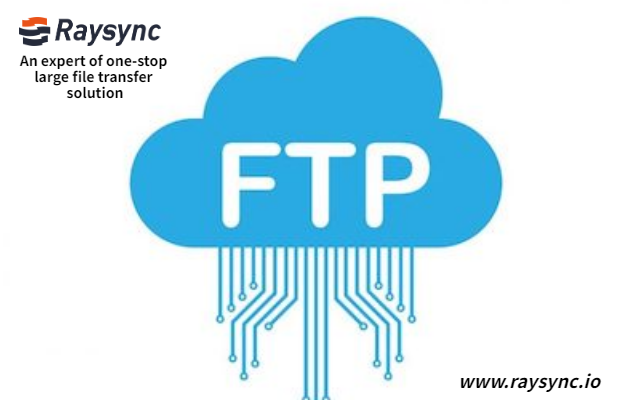Why Do Enterprises Need Secure Data Collaboration?
July 20, 2021Since the advent of the digital age, companies have begun to realize the importance of accessing more data. The more information available, the better for the organization.

Data has always been and will continue to be the king. Correct data entry can provide more information about the challenge and help build better solutions. Companies are gradually realizing that obtaining more data through third-party partnerships can help create better growth opportunities.
However, for sharing data between companies, three important factors must be kept in mind:
1.Data sharing must be mutually beneficial to both organizations
2.The benefits of data sharing must outweigh the risks
3.Trust in data sharing remains fuzzy
Although this is a no-brain company willing to share data, only if it is mutually beneficial, what people need to take care of, how safe is the transaction?
Without proper security measures, data sharing between companies may be at risk. In a centralized data sharing model, this risk increases exponentially as data owners lose control of their valuable assets. Without proper security controls, ensuring compliance is definitely a problem.
In order to solve these unique problems in data sharing, companies have to consider newer technologies for data sharing to avoid unauthorized access.
Companies interested in adopting modern file sharing and collaboration solutions usually consider two options.
The first choice is to stick to the end. Company safety is the most important issue. By making it difficult and time-consuming to share information, this option affects the level of collaboration an organization can perform, thereby minimizing productivity.
The second option is to choose to move forward at full speed because the company encourages the sharing of information and promotes collaboration. This strategy allows employees to easily collaborate inside and outside the organization, thereby increasing productivity and revenue. The danger of this choice is that it greatly increases the possibility of loss of sensitive data (for example, intellectual property) while also failing to comply with global data protection regulations.
However, there is a third option, which neither hinders data loss prevention efforts, but also allows as much collaboration as possible. This choice is called secure data collaboration, and it is becoming an information security strategy in our modern era.
What is Secure Data Collaboration?
Secure Data Collaboration (SDC) is sharing data securely and efficiently between two parties. The BAE system has a good definition: secure data collaboration and dissemination is an electronic information sharing capability, in which two or more parties can safely exchange data with each other in an encrypted software environment—for example, for project collaboration or dissemination Sensitive information-while always maintaining control of its data.
The key here is that SDC is not "encrypting the data itself", nor is it "preventing collaboration." SDC exchanges data securely in an environment that is already secure and globally adopted (such as Microsoft Teams, SharePoint Online, OneDrive).
Before every organization in the world accelerates its migration to the cloud in 2020, one might argue that these environments are not that easy to access; how many Global 2000 organizations worldwide deploy and use OneDrive? Fast forward to 2021. In the past year, M365 has been adopted faster than anyone expected. As a result, most organizations have access to these secure cloud containers and are now ready to become modern collaborators. It is in the process of transition to modern collaboration that SDC will overturn traditional information security solutions. The following are three main reasons:
Traditional information security solutions are based on the precautionary assumption: locking data or preventing data from leaving the organization is disabling collaboration, not enabling collaboration. This attitude does not apply to modern collaborators who want to increase productivity and provide services to customers. However, SDC is based on the assumption that the organization wants to use three shared data RD parties; they need to help manage access control to secure containers (such as Microsoft Teams).
Secure data collaboration is built from the cloud to the cloud: Information Rights Management (IRM) and Data Loss Prevention (DLP) were originally built to support traditional enterprises, mainly operating locally. Modern collaboration requires security solutions built specifically for the cloud from the cloud. Collaboration is constantly changing, and on-premises solutions are not adaptable. SDC needs a solution that assumes changes.
Productivity is always more important than security: this has been an ongoing debate since the advent of information security; however, last year it has been proven that organizations will ensure that their employees remain productive at all costs. We believe that those organizations that need to spend another five years to "go digital" will do it within a few weeks, and accepting security controls will play a certain role in catching up. Traditional information security solutions that continue to set barriers to productivity will no longer solve the problem. SDC is focused on truly achieving this balance for its users.
Many organizations are struggling to share data internally across departments and externally with partners, suppliers, suppliers, and customers. They use manual methods, such as sending spreadsheets via email or performing batch processes that require extracting, copying, moving, and reloading data. These methods are notorious for lack of stability and security, and most importantly, when the data is ready for consumption, it is often out of date.
Raysync Secure File Transfer Solution
In order to ensure the security of data transfer and prevent data leakage, cracking, monitoring and other security issues, Raysync adopts financial AES-256 and SSL encryption technology to effectively ensure the security of data transfer.
Encryption algorithm and security setting:
● TLS algorithm encryption
AES-256 financial level encryption to protect the privacy security of users.
● FTPS Encryption Technology
Add SSL security features for FTP protocol and data channel.
● Firewall friendly
The Raysync protocol only needs to open a UDP port to complete the communication, which is more secure compared with the lots of firewall network opening ports.
● Copyright Protection
Support the online preview of files/pictures/videos via browsers and clients, which can be viewed quickly without downloading. Support add watermark to video files to prevent file leakage and effectively protect copyright.
If you want to know how Raysync provides modern solutions to protect your company data while supporting employee collaboration, please contact us to arrange a demo. The Raysync team will write more articles on secure data collaboration in the coming weeks, and we are happy to share more progress on this topic.
You might also like

Q&A
May 11, 2021File Transfer Protocol (FTP) is a server that sends files over the network. Other software available and the way FTP works in the background to ensure correct data transfer.

Q&A
August 24, 2022Raysync file transfer accelerator can solve the acceleration problem during file transfer. Click here to learn more!

Q&A
June 16, 2021What is MFT software? Managed file transfer software is a program or service used to manage the secure transfer of data and files from one person to another over the network.